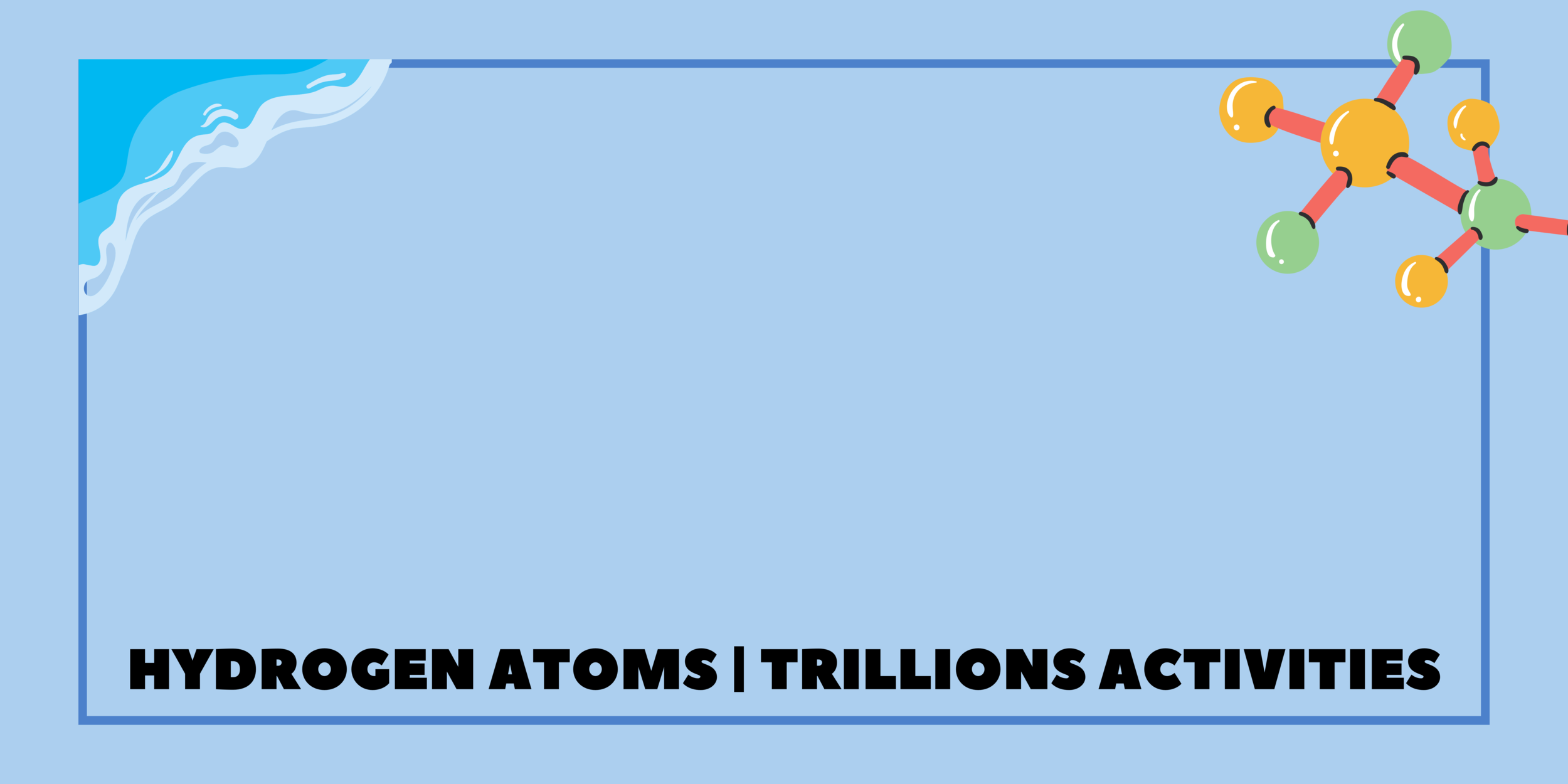To truly grasp the scale of a billion hydrogen atoms, one must first delve into the characteristics of hydrogen itself. As the most abundant element in the universe, hydrogen exists primarily as molecular hydrogen (H₂), comprising two hydrogen atoms. However, for the sake of this discussion, we will focus on the individual hydrogen atoms, denoted simply as H.
Hydrogen atoms are diminutive entities, with a diameter on the order of 0.1 nanometers, or 1 angstrom. This immeasurably small scale positions hydrogen atoms as quintessential representatives of atomic theory and quantum mechanics, where classical intuitions about size break down entirely. To contextualize this minuscule structure, consider that one nanometer is equivalent to one billionth of a meter, or (10^{-9}) meters. Therefore, to calculate the length occupied by one billion hydrogen atoms lined up in a row, we must first examine the dimensions inherent to these individual particles.
The computation begins with the linearly arranged hydrogen atoms. As established, each hydrogen atom has a diameter of approximately 0.1 nanometers. Hence, the equation for a billion hydrogen atoms is:
Length = number of atoms × diameter of one atom
Substituting the values, one arrives at:
Length = 1,000,000,000 × 0.1 nm
Converting the nanometers into meters, the total length becomes:
Length = 1,000,000,000 × 0.1 × 10^{-9} m
Ultimately, the length amounts to 0.1 meters, or 10 centimeters, illustrating that a billion hydrogen atoms, when aligned in a single row, extend through a modest distance of just 10 centimeters.
It is imperative to appreciate that this metric—10 centimeters—while seemingly small, speaks volumes about the intricate world of atomic and molecular physics. To visualize this further, consider that one could line up a billion hydrogen atoms on a standard ruler spanning a mere 10 centimeters. Such a feat emphasizes the staggering contrast between atomic dimensions and typical human scales.
However, one must delve deeper into the significance of the hydrogen atom’s size and arrangement in a broader scope. In chemistry and materials science, the linear arrangement of hydrogen atoms plays a vital role in the formation of various compounds. In molecular form, H₂, two hydrogen atoms bond together, possessing a covalent bond that is extraordinarily strong relative to the elemental nature of individual atoms.
Furthermore, hydrogen’s propensity for bonding catalyzes an expansive array of chemical reactions, making it a foundational element for organic molecules like hydrocarbons. In such contexts, understanding the volume occupied by atoms becomes vital for predicting the properties of substances and their potential applications in fields ranging from energy production to pharmaceuticals.
Beyond mere counts of hydrogen atoms, one cannot neglect the role of quantum mechanics in shaping our comprehension of atomic behaviors. At this microscopic level, probability functions dictate the cloud-like distributions of electrons around nuclei, rendering simplistic linear arrangements an incomplete picture of reality. In essence, hydrogen atoms rarely exist in isolation under typical conditions. Instead, they cluster together, influenced by electromagnetic forces. As such, arrangements of billions of these atoms would form vast gas volumes or be localized in solid or liquid states, dependent on temperature and pressure conditions.
The implications extend to astronomical scales as well. In interstellar clouds, billions of hydrogen atoms contribute to molecular clouds that serve as stellar nurseries, where conditions favor the birth of stars. Here, the exact number of hydrogen atoms is astronomical. A single ember of a dense interstellar cloud can harbor the same number of atoms found in a billion H, reflecting the grandeur of the cosmos.
Additionally, one cannot ignore the significance of hydrogen in the development of technologies. The hydrogen economy, focused on utilizing hydrogen as a clean energy source, necessitates an understanding of atomic behavior—namely, the capacity of hydrogen atoms to participate in combustion and reform into electricity via fuel cells. High-performance applications, such as rocket propulsion, where hydrogen serves as a propellant, exemplify the practicalities derivative from a fundamental comprehension of atomic structures.
In conclusion, the consideration of how long a billion hydrogen atoms would measure unearths more than just numerical sizes—it entwines itself intricately with themes of atomic theory, chemistry, and cutting-edge technology. Encompassing a modest 10 centimeters, this unexpectedly compact measurement serves as a portal through which we may explore vast paradigms within the realms of scientific inquiry. As we continue to unravel the complexities of atomic interactions, the hydrogen atom, though seemingly trivial when examined individually, emerges as a linchpin in understanding the universe’s workings and our future innovations.












